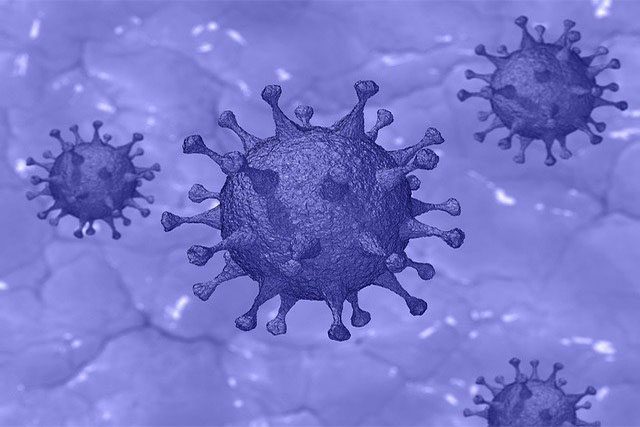
The Department of Health introduced new terms “fresh cases” and “late cases” in its COVID-19 cases report last week, which caused confusion to the public over the weekend.
In a virtual briefing last Friday, Health Undersecretary Maria Rosario Vergeire announced that the health department would be releasing separate data on freshly confirmed cases and backlogs, tested samples that have not been processed.
This decision came after the public expressed alarm and concern over the easing of restrictions in areas still at high risk of COVID-19 transmissions into the more relaxed general community quarantine despite the reported gaps in DOH’s data collection and thousands of backlogs.
Instead of just releasing data on new confirmed cases and the COVID-19-related deaths, Vergeire said that the health department will divide the numbers into fresh or newly validated ones and those from their delayed reporting of cases.
“Kung noon ang ipinapakita namin ang simpleng bilang lang ng mga pumapasok at naba-validate na kaso ng epidemiology bureau, simula po ngayon ay hahatiin na po namin ang mga numero para ipakita kung ilan sa mga ito ay fresh o newly-validated case kada araw at ihihiwalay na rin po namin kung ilan naman ang late o nagmula lamang sa delayed reporting,” she said on Friday.
Vergeire acknowledged that these figures may result in more misunderstanding and fear.
“Batid po namin na ang pagiging teknikal ng mga numerong ating pinalalabas ay isa sa mga dahilan ng hindi pagkaka-unawaan, na paminsa’y maaaring magdulot ng takot at pangamba na muli na naman tayong bumalik sa ECQ,” the health undersecretary said.
When the DOH first released the report under its new classification last Friday, the phrase “fresh cases” then made it to the Philippine trends on Twitter as Filipinos expressed their criticisms against the health agency anew for the new classification of numbers..
Such concerns also reached Vice President Leni Robredo who also sought for health authorities to clarify the reason behind the revision of their previous classification.
Associate Justice Marvic Leonen likewise questioned the criteria for these two new categories.
“May I ask, how many potential cases are there? (number of people that had to be tested but whose results have NOT YET come out within the past 3 days?” Leonen asked on Twitter.
May I ask, how many POTENTIAL FRESH cases are there? (number of people that had to be tested but whose results have NOT YET come out within the past 3 days? For our complete information please, thanks pic.twitter.com/IYhoOnpEB8
— Help others. Humanity will endure. (@marvicleonen) May 31, 2020
As of June 1, the country has 552 new patients who are positive for COVID-19. Of these validated cases, 119 were classified “fresh” and 433 were fell under “late” cases.
Definition 101: Categories of confirmed cases, backlogs and other health terms
Fresh cases vs late cases
The difference between the two terms depend on the number of days they were validated by the Epidemiology Bureau, according to DOH’s website.
Fresh cases refer to “test results that came out and were validated by the Epidemiology Bureau in the last three days.”
Late cases, on the other hand, are “those whose results came out four days ago or more but were just recently confirmed.”
Vergeire noted that the late cases came from the backlogs that the DOH have been aggressively catching up to validate.
ABS-CBN’s resident data analyst Edson Guido also previously shared graphs last week that showed the large discrepancy between the confirmed cases reported by the DOH and the ones declared positive by the licensed laboratories.
On May 28, the graph showed a total of 7,494-gap between the confirmed and positive cases.
LOOK: Confirmed (or validated) vs Positive
Let's look at delays in case validation. As of May 27 (yesterday):
– Confirmed reported by DOH: 15,049
– Positive reported by labs: 22,543Difference of 7,494. That's still.. a lot. Don't be surprised to see 500-700+ "new" cases soon. https://t.co/rCLMjJqoHY pic.twitter.com/o8yOd4gNmv
— Edson (@EdsonCGuido) May 28, 2020
Factors that cause backlogs
During the May 18 virtual presser of DOH, ThinkWell Senior Policy Advisor Dr. Maria Eufemia Yap bared three factors that cause backlogs:
- Reporting schedule or cut-off time of reporting the number of cases
- The longer time of manual extraction process
- The bottleneck of samples from local government units
Health expert Jason Haw also shared the types of backlogs based on the DOH’s announcements.
- Backlogs from delays in encoding, profiling the patient and coordination issues
- Double counting due to duplicates from the same laboratory or testing facility
- A patient undergoing tests from different testing facilities, thus causing duplicate results
1/n There are 3 kinds of #COVID19PH case validation backlogs
1. True backlogs due to delays in encoding somewhere in the surveillance notification system – delays in profiling the patient, human bottlenecks in encoding, coordination issues across different levels.
— Jason Haw (@jasonhaw_) May 28, 2020
Mortality rate
Vergeire explained that the agency’s basis for the mortality rate is the date of the person’s death, rather than the date it was reported.
“Magandang balita po ang patuloy na pagbababa ng deaths. Ayon sa mga pag-aaral, pag ang bilang ng namatay ay tuloy tuloy na bumababa, ito ay magandang senyales na ang epidemic ay nag-peak na,” she said.
Case doubling time is the amount of time “it takes for the number of cases to increase twofold.”
Vergeire said that the country’s case doubling time in Metro Manila is longer from the three-to-four period to 6.29 days.
Critical care utilization rate is a figure that tells “the capacity of the healthcare system to handle severe cases, as seen in how much of the intensive care facilities is currently used, and how much is available for use.”
Vergeire said that the country’s critical care utilization rate is now at 34%.
“Isa rin pong magandang indikasyon ito dahil ibig sabihin hindi natin nasasagad ang mga gamit natin ng ICU beds at ventilators at ibig sabihin din ay hindi natin nao-overwhelm ang ating health system,” said Vergeire.









